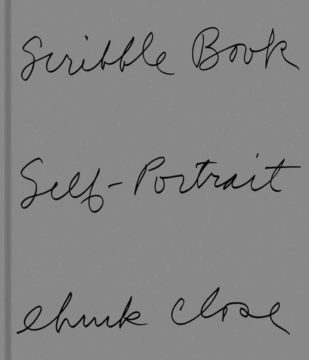Chuck Close immediately liked the idea of a book without words. As a child, his severe dyslexia stood in the way of reading, making images all the more important. To this day, he remembers a visual encyclopaedia from his early years and the feeling of being overtaken by the intensity of its pictures. The idea was also compatible with Close’s ongoing interest in revealing the process of his work, which he accomplishes largely through visual presentation, using very few words, if any.
Scribble Book is a self-portrait that emerges step-by-step out of the printing process, one plate and one colour at a time. The viewer follows a series of 9 individual plate proofs along with a corresponding series of 9 progressive proofs. By comparing the plate proofs against the progressive proofs, the viewer may ascertain not only the effect as one colour is added to another to create the final 9-colour self-portrait, but also the compositional decisions and careful modifications
made by Close at each stage of the project.
A similar work was made with 12 plates and included in the exhibition Chuck Close Prints: Process and Collaboration at the Metropolitan Museum of Art in 2004. It was an immediate success. However, Close became fully aware of the effectiveness of the work only by means of an error: two of the prints were hung out of sequence, a circumstance that evaded the notice of both Close and the museum staff. It was not long before representatives of the museum received letters from two visitors who had noticed the error. “And just imagine,” Close relates, “if two people took the time to write letters, how many more must have figured it out and not bothered to write in!” Careful viewing was all that was needed, and the work inspired just that.
Scribble Book is presented in this Steidl edition as two accordion-fold books. The first shows the series of plate proofs,
and the second the series of progressive proofs, culminating with a 9-colour self-portrait. For those seeking a more detailed
understanding of the printmaking process, these books are accompanied by a separate text booklet in which the artist gives a personal account of the drawing process as recorded through the soft-ground etching method.
